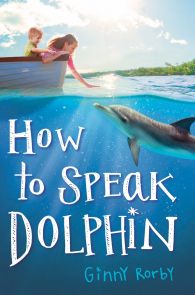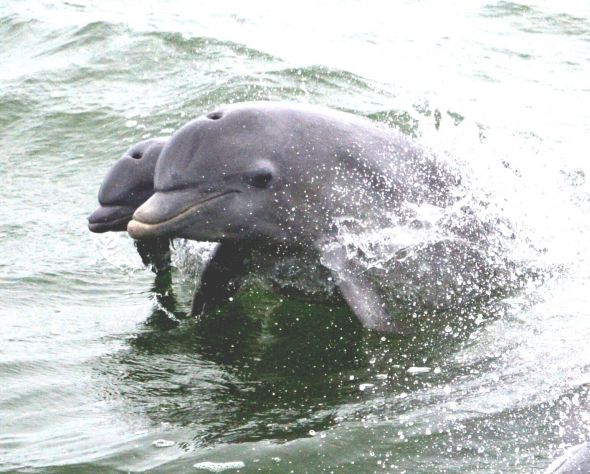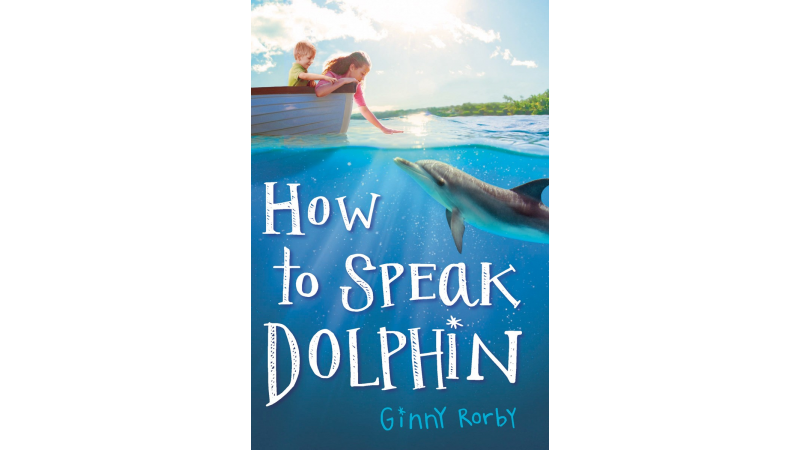 Today, we have the pleasure of introducing you to Schneider Family Book Award-winning author Ginny Rorby, whose new book, How to Speak Dolphin will be released on May 28th. School Library Journal praised it, “Rorby paints a vivid picture of life with a child with autism and the struggles a family can face. This book will raise questions about the ethics of marine life attractions and leave readers rooting for Lily, an appealing narrator.” Read below for an interview with author Ginny Rorby and her editor, Emily Seife.
Today, we have the pleasure of introducing you to Schneider Family Book Award-winning author Ginny Rorby, whose new book, How to Speak Dolphin will be released on May 28th. School Library Journal praised it, “Rorby paints a vivid picture of life with a child with autism and the struggles a family can face. This book will raise questions about the ethics of marine life attractions and leave readers rooting for Lily, an appealing narrator.” Read below for an interview with author Ginny Rorby and her editor, Emily Seife.
Something that amazes me about your book is that you manage to make an absolutely compelling argument for why Nori, the dolphin, should not be kept in captivity, while still making sure that the book is an engaging and entertaining story for young readers. Your passion for animals shines through in How to Speak Dolphin, as well as in your earlier books. Have you always loved animals and felt strongly about their treatment?
Always. I grew up with parents who loved animals and let me fill the house with assorted pets. At one time I had 22 baby turtles, a lizard, a snake, and a tame, but still wild, Purple Gallinule. My parents also instilled in me a sense of responsibility. If you adopt a cat, dog, bird, whatever, you are responsible for its care, or for finding it a good home if you are unable to continue to take care of it. That is the message I want kids to get.
Can you share the story of the “real” Nori?
When I was at the 2013 FAME conference in Florida to receive the Sunshine State Young Readers award for Lost in the River of Grass, I was telling a teacher from Naples about this book I was writing for Scholastic. I told her I’d hit a wall because I didn’t want to see Nori go back to the area of the Gulf of Mexico where the BP oil spill had occurred. Dolphins are dying there and I wanted that to be an obstacle for my characters, too. She asked if I knew about Dolphin Project on Marco Island. I was on the phone the next day. Dolphin Project is a terrific opportunity for adults and children to enjoy viewing wild dolphins at close range. The call to the director, Captain Chris Desmond, worked out for me pretty much as it does for Lily and Zoe. He guided me through what the process of transporting Nori and releasing her would be. A few months ago, a baby dolphin was born in the Marco River and has been named Nori.

Lily’s brother, Adam, is autistic, and their stepfather refuses to get Adam the support and care he really needs. He means well, but he’s unable to face reality and he wants to find easy solutions to complicated problems. How do you present such complicated and difficult topics to young readers?
I try to see both sides of every argument, even when I’m firmly on one side or the other. But more importantly, I never want there to be a villain or a victim in my stories. I’m always trying to portray real people in situations that resonate with readers, young and old. There’s no greater reward than receiving an email like the one I got a couple days ago from a father who is reading How to Speak Dolphin to his daughter to help her understand her autistic brother. Or when emails come from kids who have connected with a character in one of my books on a personal level. Then I feel I’ve done my job.
It’s incredible how much research can go into a novel. What kinds of research did you do for this book?
I’m lucky. I’m grew up in Florida and knew exactly where I need to go to do the research for this novel. I already knew a great deal about dolphins and dolphin behavior from the research I did for my first novel, Dolphin Sky, and about Autism Spectrum Disorder from research I did for another book I’d written. I like trying to experience as much of what is going to happen to my characters as I possibly can. To that end, I traveled from northern California to Florida four times while writing the book, equivalent to how many times I got stuck and needed to get in the trenches with my characters. For Adam’s character, I spent a great deal of time visiting a local school with young children on the autism spectrum.
One of the most surprising and fascinating things I learned from How to Speak Dolphin was that there are people who use echolocation to “see”! Can you share a little bit about that, and explain why it found its way into your story?
I love TED talks and one that stuck with me was a presentation given by Daniel Kish. Blind since the age of two, he navigates the world using echolocation—like a bat or a dolphin. You really have to watch some of the videos to believe what he can accomplish. As soon as I heard his talk, I decided to create Zoe, who is blind, but is the one who truly sees and understands what life in captivity means for Nori. I’m also very fond of blowing up myths about what people with physical challenges can accomplish.
How do you come up with the names for your characters?
I always name my characters after people I love or care deeply for. That way I have a relationship with them before I start writing and will treat them with respect.
What do you want kids to take away from this book?
We keep animals in cages, and whales and dolphins in concrete, chlorinated tanks, then starve them so they will do tricks for food. We lock monkeys and chimpanzees, dogs, cats, and rabbits in cages and test chemicals on them. I want kids who go to a zoo, a circus, or an aquarium, or see a commercial or a movie with an animal in it, to ask themselves where that animal came from, and what was done to it to make it do what it is doing to amuse me? Then I want the life it's living to break their hearts.



